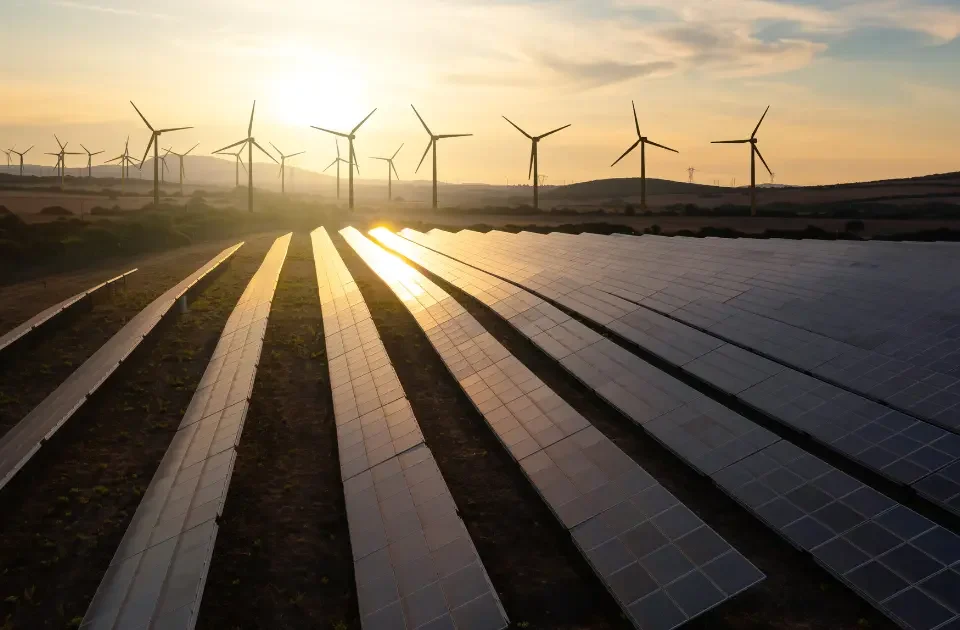Wind Energy – Significant Advantages and Challenges
Clean energy sources are expected to be substantially increased by a growing global population and an increasing demand for electricity resources. Wind power is the primary source of electricity, which had powered by decades of scientific discovery and technological development. The advantages and benefits of wind power, when once harnesses and used correctly, can bring significant changes in generating electricity.
Advantages of Wind Power:
Wind power can be stored when batteries used, and not all winds can use to suit the timing of demands for energy. In comparison, good wind sources also exist well in remote areas far from the electric power supply. Wind power has many benefits, which is why it is the most rapidly growing form of energy in the world.
1. Clean Energy
This is a clean and safe source of fuel. The wind energy never pollutes the environment, unlike other coal and natural gas power plants. Also, wind turbines will not produce atmospheric emissions, which in-turn cause acid rain or greenhouse effect on planets.
2. Need Less Space
The space required for the wind turbines is much smaller, and the land surrounding it can continue to use for other uses such as agriculture.
3. Domestic Source
It is a domestic energy source and needs a limitless local resource. The supply is massive and inexhaustible. Even more, giant turbines used to contribute to meet domestic power supply.
4. Renewable Energy
Energy from wind is economical. It is one of the most sustainable alternatives available today at a rate of 4-6 cents per kilowatt-hour, depending on the wind power and project financing.
5. Produce Energy in Remote Locations
On large farms or ranches, wind turbines may installed. This is of significant benefit to the rural economy, which offers most of the best wind farms. As wind turbines need a small fraction of the land, farmers and ranchers can continue to work on the earth.
6. Cut Greenhouse Gas Emissions
Wind turbines can not generate air or water contaminating pollutants and do not need cooling water. The amount of energy produced from fossil fuels, leading to lower total air pollution and carbon emissions, can also be decreased by wind turbines.
7. Reduce Power Sector Water Consumption
Practically no water used in wind energy. Wind energy has the lowest water consumption footprints. So replacing wind power in thermal and nuclear power stations is a significant step towards saving and maintaining the excellent assets of water in the world from possible deficits of electricity generated by energy.
Grand Challenges of Wind Power:
There are various grand challenges in wind energy which requires advanced progress from the scientific industry. Let’s have a glance at challenges here:
1. High Initial Cost
It is highly costly to build turbines and wind farms. Offshore wind power provides more electricity than onshore wind power, but it costs far more. Construction and maintenance are the primary costs of wind turbines.
2. Technology Immaturity
Today’s wind turbines have seen rapid technological advances to rise sustainability. Future technology helps these wind power generation models and expertise needed to meet the power generation potential.
3. Unexpected Wind Patterns
For adequate generation power, the wind needs to blow continuously over a long period. As the wind conditions cannot be forecast, though, in certain areas, it is challenging to obtain sufficient power.
4. Landscape and Usage
Wind turbines are tall systems that need to work, preferably on an open site, to make maximum use of the current wind. It should be built apparent across a relatively large region.
5. Noise and Aesthetic Pollution
Some wind turbines are, in many cases, produce lots of noise than large turbines, which can make people who live in the area uncomfortable. They often alter the landscape of a region that can adversely affect the surrounding communities.
6. The Threat to Wildlife:
While wind power poses various challenges, such as the risks posed to birds and bats flying into blades of wind turbines. With proper planning of wind plants, most of these problems were reduces. But, scientists are conducting breakthroughs in pioneering the construction and maintenance of wind turbines.
Outlook
Wind power plants have various challenges as it is a natural energy form, and it can be quite unpredictable. However, it is a great potential source of alternative power for nations to ensure energy security solutions. The wind energy power plant will be able to supply many of its intended needs at a low cost by responding to major research challenges in wind energy science.



